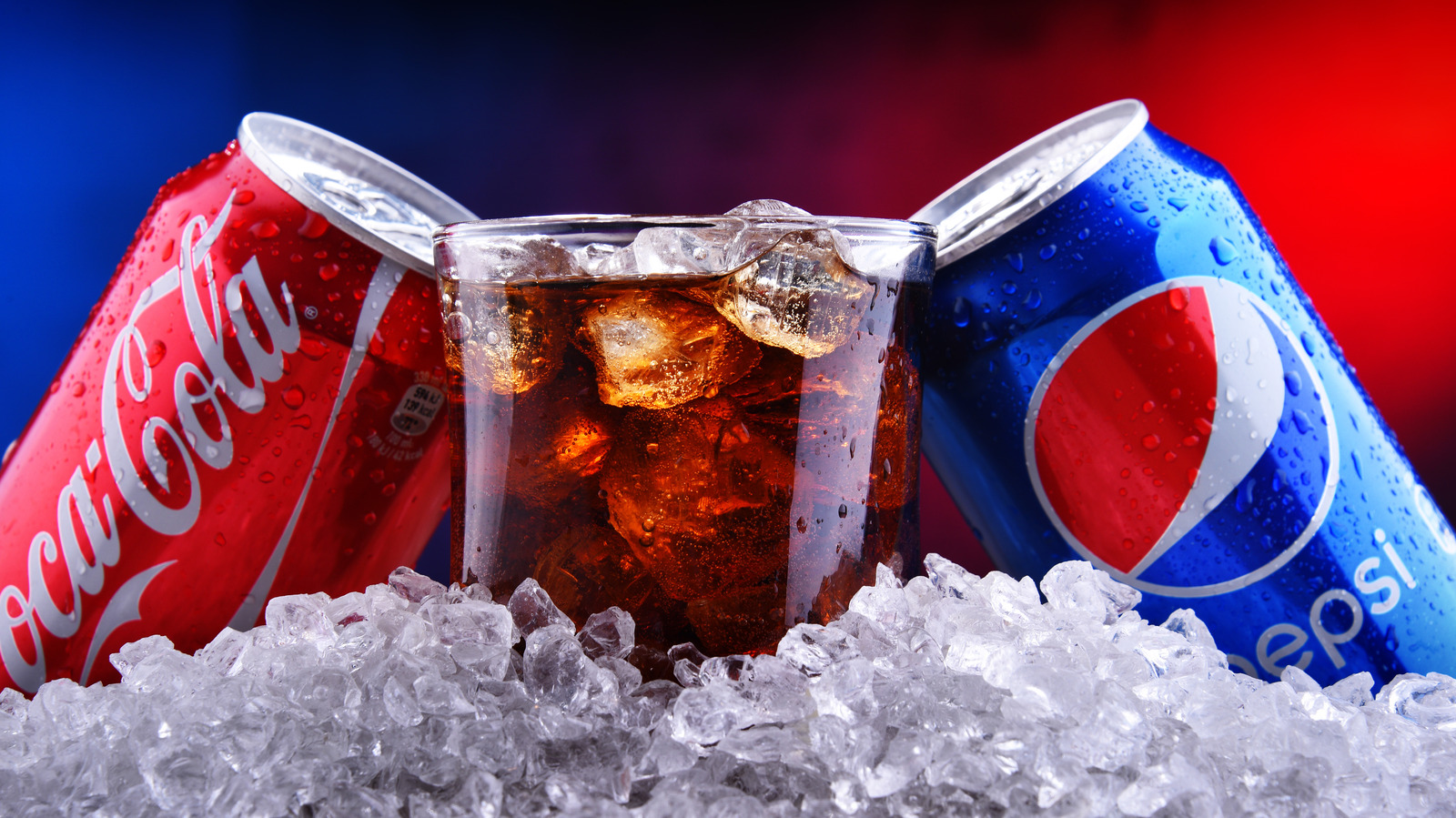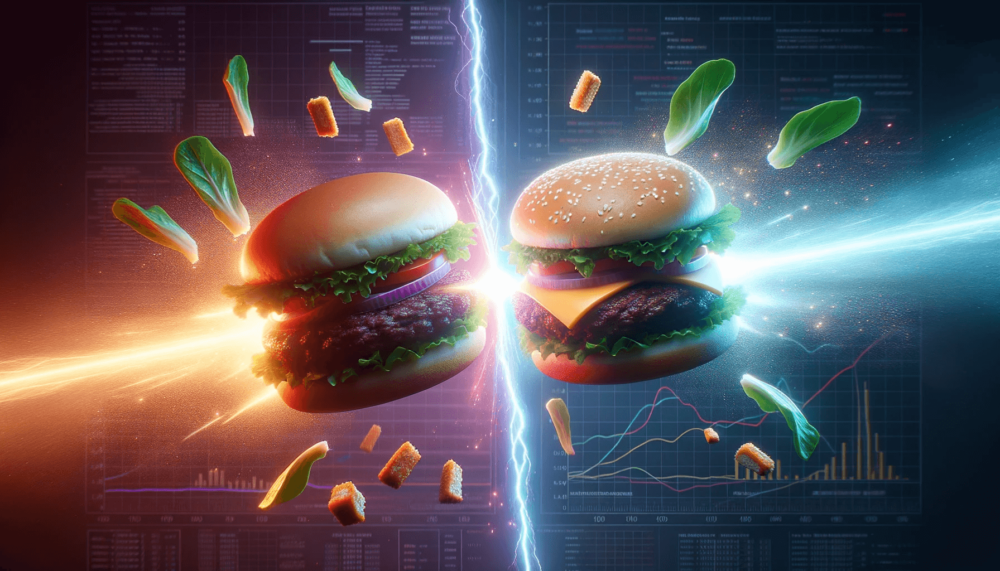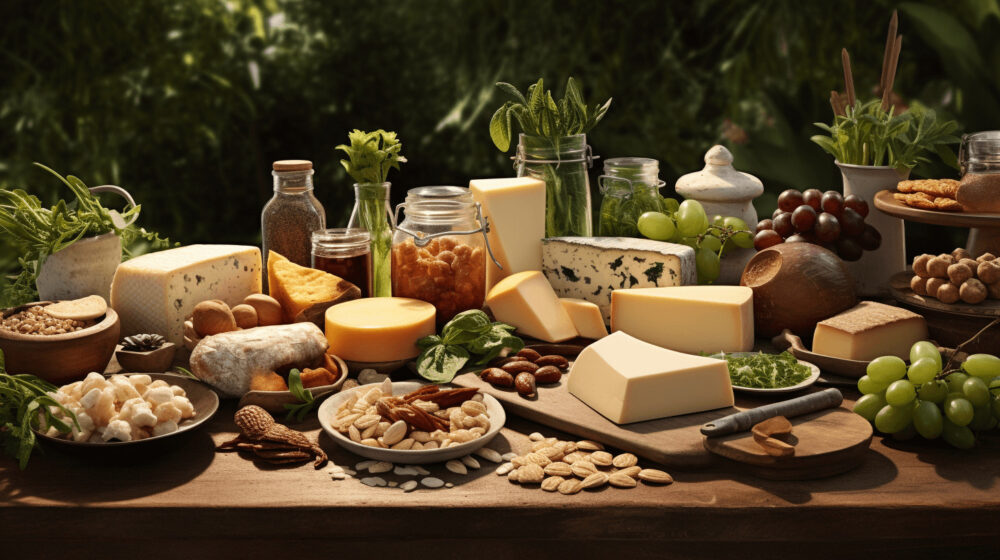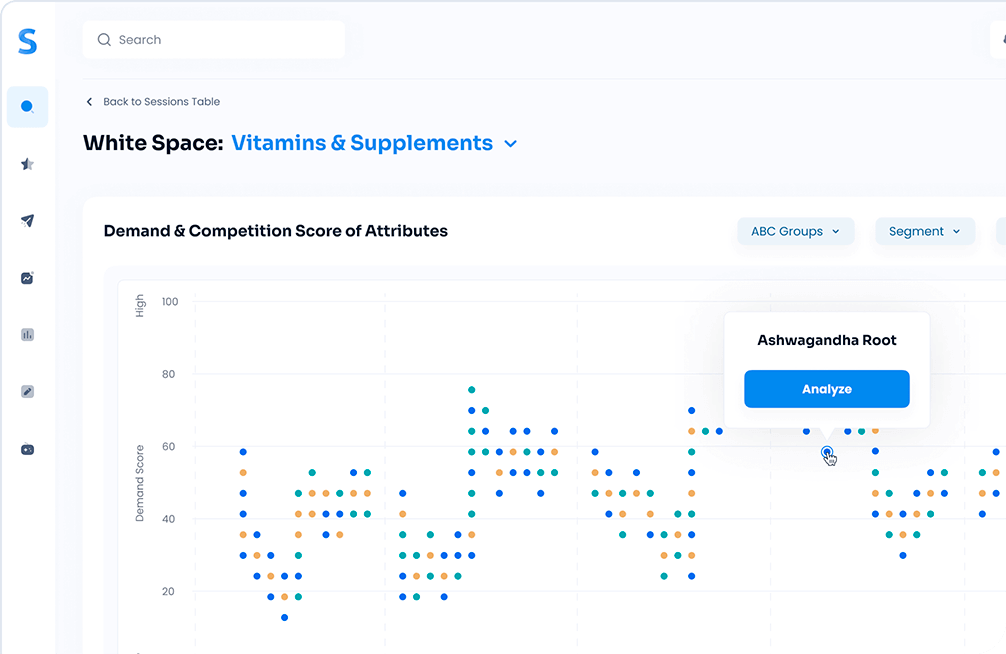In the dynamic world of consumer goods, brands constantly fight with challenges. Introducing or rebranding products might present a chance for fresh innovation, but it’s also laden with potential pitfalls. These challenges aren’t merely about producing a popular item; they involve a deep understanding of current product trends and market shifts.
Everyday products, from the beverage you sip during your break to the toothpaste you use nightly, carry the weight of Consumer Packaged Goods (CPG) brands’ vast responsibilities. They aren’t just providing commodities; they’re shaping experiences, traditions, and daily routines for countless consumers. Success in this arena hinges on being attuned to the prevailing market sentiments, forecasting upcoming trends, and sidestepping missteps.
So, what transpires when iconic brands, those that dominate their sectors, falter? This article offers a glimpse into some notable misjudgments made by renowned CPG brands. Through their stories, we’ll underscore the importance of staying updated with market dynamics and the potential of strategic foresight. Join us as we explore these unforgettable episodes in CPG history.
1. New Coke (Coca-Cola)
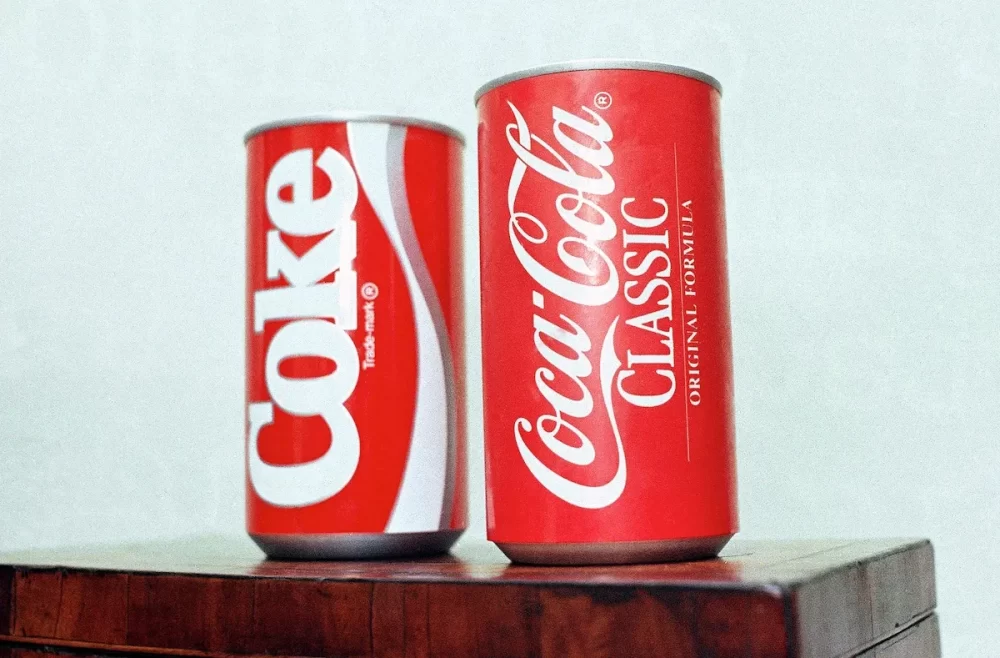
Background:
In the 1980s, the beverage industry experienced a seismic shift. Soft drink titans were neck and neck in a race for market domination. Amid fierce competition from its longtime rival, Pepsi, Coca-Cola felt the heat, not just in the boardroom, but also on the supermarket shelves. The buzzword was ‘innovation’, and companies scoured every corner for the next big thing.
What Happened:
In an audacious move, Coca-Cola decided to reformulate its century-old drink in 1985. The decision was driven by a combination of declining market share and blind taste test results favoring a sweeter soda. This resulted in the introduction of “New Coke,” a variation with a distinctively different taste profile.
The reaction was, to put it mildly, explosive. To many, this wasn’t just a change in flavor; it felt like a betrayal. Public outrage was so pronounced that protest groups, such as “Old Cola Drinkers of America,” sprang up. The company’s phone lines were jammed with disgruntled customers lamenting the loss of their beloved drink.
Outcome:
Coca-Cola quickly realized the depth of its miscalculation. Just 79 days after the launch of New Coke, the company introduced “Coca-Cola Classic,” essentially the original formula. New Coke wasn’t shelved immediately but eventually faded into the background. This episode became a textbook example of the dangers of disregarding deep-rooted brand loyalty. It reinforced an age-old lesson: while innovation is crucial, it must always be balanced with an understanding of what the consumers truly want. In the end, many argue it inadvertently strengthened Coca-Cola’s bond with its audience
2. Crystal Pepsi
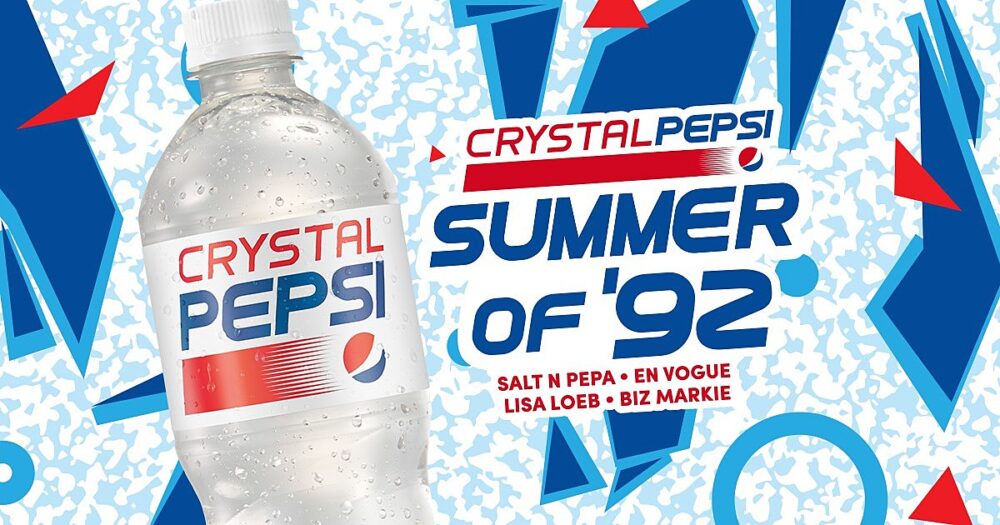
Background:
The early 1990s were a time of boundary-pushing in the carbonated beverage world. Amidst the backdrop of an ever-evolving market, PepsiCo sensed an opportunity. They wanted to innovate, aiming to bring something completely fresh to the table and capture consumers’ imaginations. Translucency became their gambit, seeking to redefine what consumers expected from a cola.
What Happened:
Enter Crystal Pepsi in 1992. With a transparent appearance, it aimed to offer consumers a refreshing cola experience without the traditional caramel coloring. PepsiCo heavily bankrolled its marketing, painting it as a futuristic drink. Ads with the tagline “You’ve never seen a taste like this” flooded the airwaves, accompanied by the iconic Van Halen track “Right Now.”
However, consumers scratched their heads. The look was intriguing, yes, but many were left perplexed about the drink’s flavor profile, expecting something citrusy or entirely different from traditional cola. In essence, the disconnect between the product’s appearance and taste was jarring for many. Furthermore, some argued that its taste, though cola-esque, wasn’t quite on the mark.
Outcome:
Despite the initial buzz, Crystal Pepsi’s sales didn’t match the expectations set by its flashy marketing. By 1994, just two years after its debut, it was pulled from shelves. PepsiCo had learned a hard lesson about the intricacies of product differentiation. While innovation can be the key to capturing market share, it’s imperative that it aligns with consumer expectations and preferences. In the end, Crystal Pepsi serves as a cautionary tale about the risks and rewards of radical product redesign.
3. Tropicana Rebranding
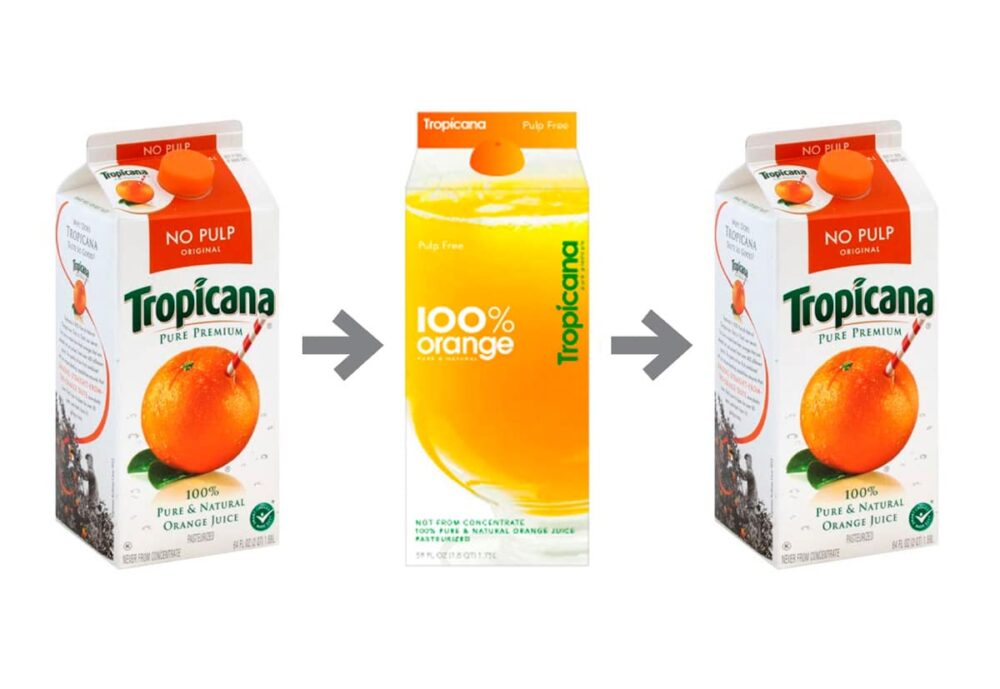
Background:
When you think of a refreshing glass of orange juice, Tropicana is often the first name that comes to mind. With its familiar “orange with a straw” image, Tropicana carved a distinct identity in the beverage market. By the late 2000s, the brand was a powerhouse, synonymous with morning rituals and healthy choices. Their position seemed unshakable, and yet they aimed to shake things up themselves.
What Happened:
In 2009, Tropicana decided to completely overhaul its packaging. The company unveiled a dramatically different package design, scrapping the familiar orange-and-straw imagery. Instead, the new design spotlighted a glass of orange juice with a typographic emphasis on “100% Orange Pure & Natural”. The intent was to modernize and set a new standard in the juice aisle, but the market response was less than juicy.
Consumers were genuinely baffled. The new design was so vastly different that many failed to recognize their beloved brand on store shelves. In fact, some even mistook Tropicana for a generic store brand. The numbers painted a stark picture, too. In just two months post-redesign, sales plunged by a whopping 20%, translating to a loss of over $30 million.
Outcome:
The adverse consumer reaction was a jolt for Tropicana. Realizing the magnitude of their misstep, they made an abrupt decision. Within a mere 50 days of the redesign’s launch, Tropicana announced it would revert to its original packaging. The Tropicana rebranding saga is more than just a tale of design gone awry. It underscores the immense value of brand equity and the risks associated with drastic changes. Brands, no matter how established, must tread carefully when altering visual elements closely tied to their identity. Tropicana’s brief foray into redesign serves as a poignant reminder: if it ain’t broke, maybe don’t fix it.
4. Colgate Kitchen Entrees
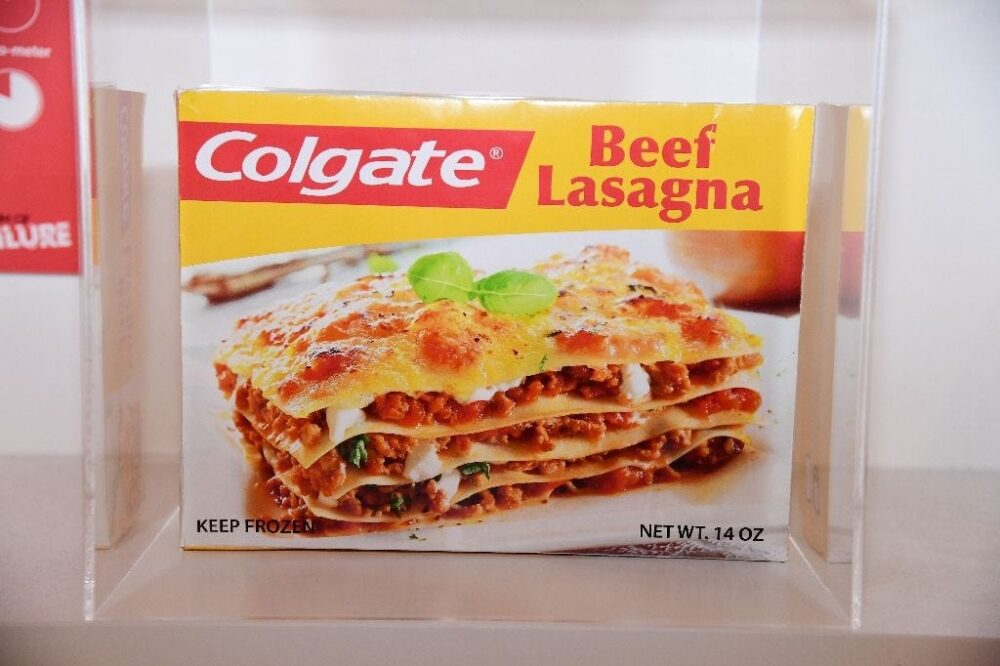
Background:
Mention Colgate to anyone, and the immediate association is a sparkling white smile. A titan in the oral care industry, Colgate has enjoyed its status as the go-to brand for toothpaste and dental products for decades. With such a formidable reputation in dental care, it might be hard to picture Colgate dipping its toes into, of all things, the culinary world.
What Happened:
In the early 1980s, brand diversification was the talk of the town. Many big brands sought to leverage their household name status across multiple sectors. Riding this wave, Colgate decided to branch out into the food industry with “Colgate Kitchen Entrees.” Imagine strolling through the frozen food aisle and spotting a range of ready-to-heat meals under a brand you associate with minty freshness. Quite the palette cleanser, isn’t it? The logic behind this bold move was to capitalize on the brand’s household recognition. However, consumers couldn’t quite disassociate the brand from its toothpaste image, leading to a less-than-appetizing response.
Outcome:
The foray into frozen meals was short-lived. The market responded with a resounding “no thanks,” and Colgate Kitchen Entrees swiftly found their place in the annals of branding blunders. The episode is a testament to the limits of brand extension. It underscored a vital principle: while brand recognition is powerful, it doesn’t grant carte blanche to venture into any arena. Brands need to ensure that their extensions align with their core identity and the consumer’s perception of the brand. Colgate’s culinary misadventure serves as a delicious lesson for brands everywhere: stick to what you’re known for, and always ensure brand extensions feel organic, not forced.
5. Heinz Purple and Green Ketchup
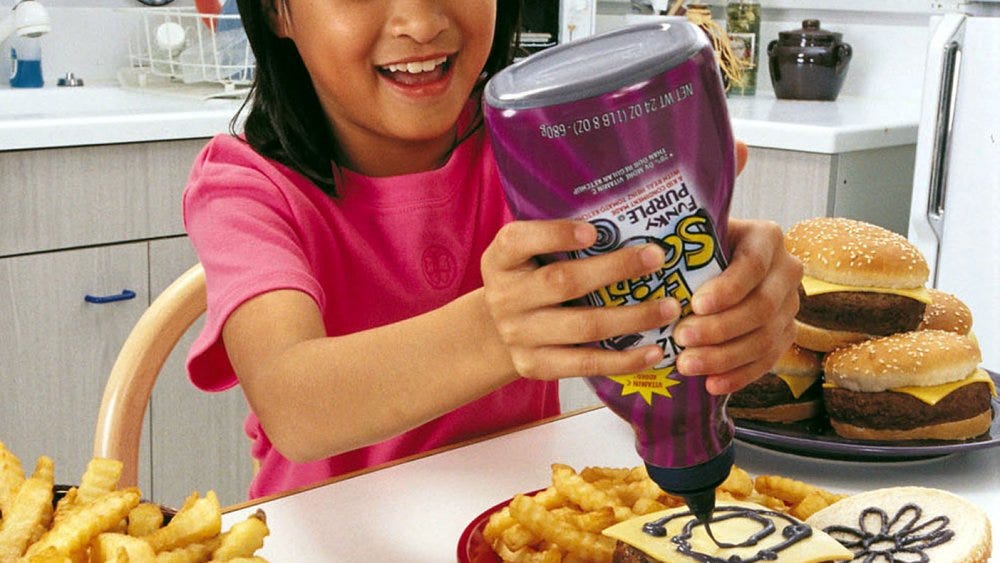
Background:
When one thinks of ketchup, a rich red tomatoey hue invariably comes to mind. This association is in no small part thanks to Heinz, the juggernaut of the condiment world. Heinz’s longstanding legacy has established it as a household staple, offering that iconic, comforting taste that millions across the globe love.
What Happened:
In a move that shook the condiment aisle, Heinz decided to add a splash of color, quite literally, to their product lineup in the early 2000s. Aiming to appeal to the younger crowd and capitalize on the Y2K era’s penchant for zany and vibrant colors, Heinz unveiled “EZ Squirt” ketchup in audacious shades of green and purple. It wasn’t just a label change. The ketchup itself was green and purple! The marketing strategy portrayed these shades as fun alternatives to the classic red, a means to make mealtime more engaging for kids.
On one hand, the strategy seemed to pay off initially. The first year saw millions of bottles fly off the shelves, with kids seemingly enamored by the playful twist on a timeless condiment. However, as the novelty wore off, a divide became apparent. While children might’ve been intrigued, many adults found the deviation from the classic red disconcerting. Ketchup, after all, had a specific color association, and these unusual variants began to seem more like a gimmick than a genuine product enhancement.
Outcome:
Novelty, while exciting, often comes with an expiration date. By 2006, Heinz decided to discontinue their foray into multicolored condiments, marking a return to their timeless, crimson roots. This venture into vibrant variants demonstrated that while innovation is crucial, it’s equally vital to gauge if it aligns with the brand’s essence and the long-term desires of the consumer base. Some changes, no matter how novel, might not stick if they don’t resonate deeply with the audience. Heinz’s colorful experiment serves as a reminder that sometimes, classics are classics for a reason. It’s essential to discern between a fleeting trend and a lasting change, especially when tinkering with something as iconic as ketchup.
The Power of Predictive Insights in CPG
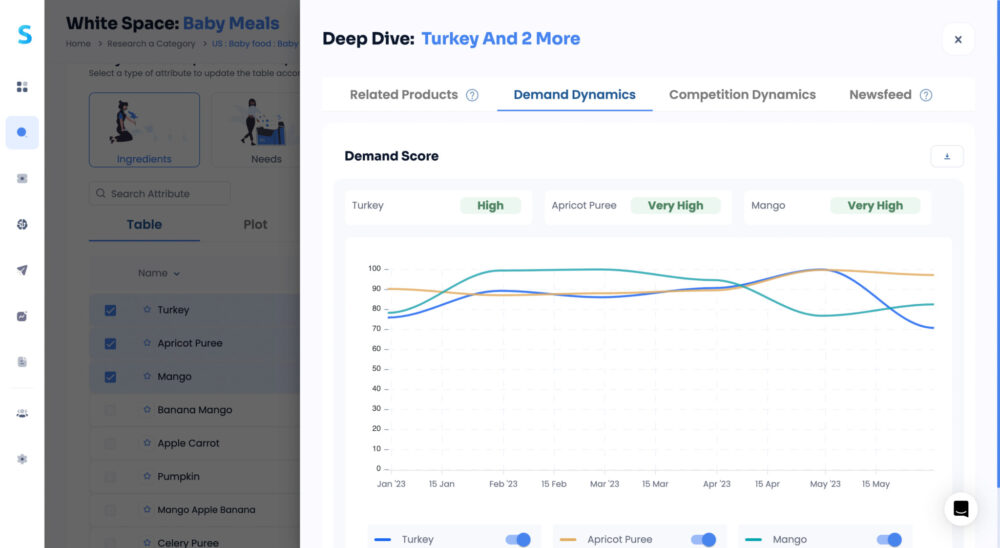
The Role of AI and Predictive Analysis:
The dawn of the digital age has brought with it game-changing tools, reshaping how industries operate and thrive. At the forefront of this transformation in the Consumer Packaged Goods (CPG) sector is Artificial Intelligence (AI) and Predictive Analysis. No longer confined to sci-fi realms, AI equips businesses with tools that dive deep into oceans of data, offering insights that were once thought impossible to glean. By analyzing past trends, behaviors, and countless other variables, Predictive Analysis provides a crystalline view into potential future scenarios, allowing brands to make proactive, informed decisions. In essence, businesses can now have a finger on the pulse of consumer desires, staying steps ahead rather than merely reacting.
AI’s Potential Impact on the Five Case Studies:
Had the brands we explored earlier been equipped with the might of predictive insights, their stories might have unfolded differently. For instance:
– New Coke could’ve employed concept testing, using AI to simulate reactions to a change in their timeless formula. The backlash might’ve been predicted, urging the brand to tread cautiously or reconsider the rebrand altogether.
– Crystal Pepsi, with insights on beverage trends and preferences, might have discerned the public’s true appetite (or lack thereof) for a clear cola, allowing for tweaks in product development or marketing strategies.
– Tropicana’s radical redesign could’ve been tested in AI-modeled markets to foresee potential confusion or backlash. Predictive tools might’ve highlighted the brand equity attached to their original design, prompting a more subtle revamp.
– Colgate Kitchen Entrees, using sales forecasting, could’ve gauged the viability of such a drastic brand extension, potentially identifying the cognitive dissonance of associating a toothpaste brand with frozen dinners.
– Lastly, Heinz’s colorful ketchup venture might have utilized AI-driven focus groups to understand if the novelty was more than just a fleeting fascination.
In essence, the power of predictive insights, with its ability to test waters and forecast reactions, might have steered these brands on paths better aligned with consumer appetites.
The Way Forward:
In the ever-evolving CPG landscape, brands that arm themselves with the most advanced tools will have the upper hand. And among these tools, AI predictive platforms, like Simporter, are fast emerging as non-negotiable assets. They allow brands to navigate the intricate tapestry of market complexities and consumer behavior nuances. With these insights, brands can ensure that product launches, rebrands, or extensions are grounded in robust data, not just gut feelings or boardroom whims. The key takeaway? To stay relevant and resonant in today’s dynamic markets, brands must harness the power of predictive analytics, embracing the future while learning from the past.
Conclusion:
Navigating the intricate landscape of the CPG market is no walk in the park. Our journey through these case studies has shed light on the quintessential role that consumer perception plays in a brand’s success or failure. Missteps, although unintentional, can be costly, both financially and in terms of brand equity. But here’s the silver lining: we’re now in an age where brands don’t have to operate on mere hunches. The technological advancements of our times beckon CPG brands to embrace the prowess of AI-driven predictive insights. Integrating this modern marvel into product development and branding strategies isn’t just a luxury; it’s a necessity to ensure that brands resonate with consumers and navigate the unpredictable market waves.
Meet Simporter
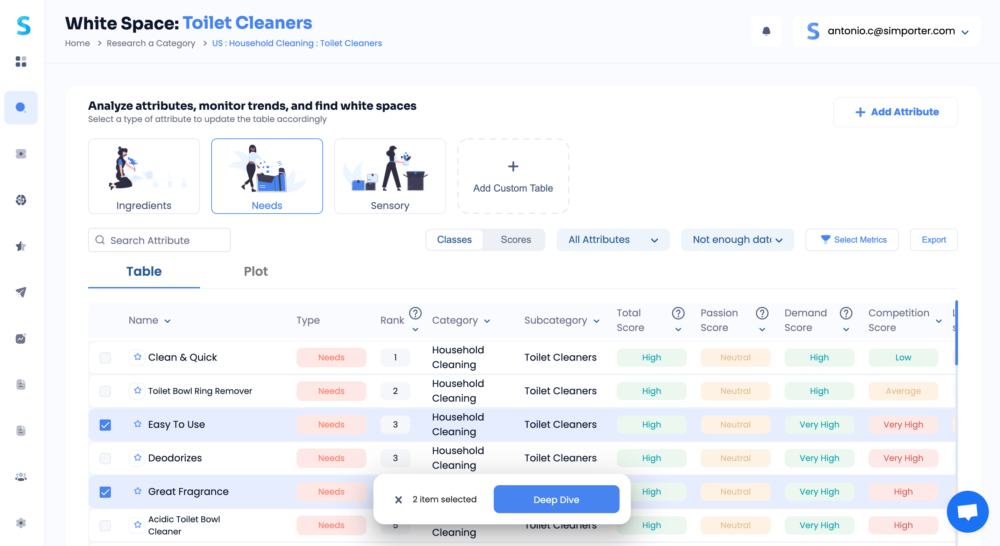
Intrigued by the potential of AI in refining your brand’s strategy? Dive deeper. Discover how trailblazing AI solutions, like Simporter, can be the crystal ball you’ve been seeking. Unearth invaluable insights, foresee market trends and ensure your brand doesn’t just survive but thrives in the dynamic market ecosystem. It’s time to make informed decisions and shape a future filled with success.
